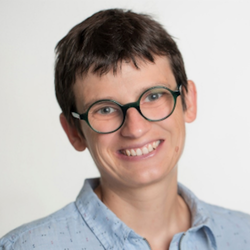
OR WAIT null SECS
MRI Treat-to-Target Strategy Fails to Help RA Patients Reach Remission
A study found MRI treat-to-target strategy does not help bring RA patients to remission, even when also targeting the absence of osteitis alongside clinical remission.
Targeting the absence of osteitis along with clinical remission in a 2-year MRI treat-to-target strategy in rheumatoid arthritis (RA) patients does not affect the long-term probability of achieving DAS28-CRP remission, a new study found.1
Investigators conducted the IMAGINE-more, an observational study, to compare a 2-year MRI treat-to-target strategy targeting the absence of osteitis and clinical remission with a conventional treat-to-target strategy targeting clinical remission alone. IMAGINE-more branched off the study IMAGINE-RA which evaluated the strategy targeting only clinical remission.2 The team ultimately aimed to see if targeting the absence of osteitis alongside clinical remission in MRI treat-to-target strategy improved clinical and radiographic outcomes over 5 years in patients with RA in clinical remission.1
“In accordance with the primary results from the IMAGINE-RA trial, these long-term data do not support systematic use of MRI to guide treatment in patients with RA in remission,” wrote investigators, led by Signe Moller-Bisgaard, MD, PhD, from the department of rheumatology at Slagelse Hospital in Denmark.
The key primary outcomes were remission, defined as a Disease Activity Score in 28 Joints C reactive protein (DAS28-CRP) of < 2.6, and no radiographic progression, indicated by a van der Heide-modified Sharp score of ≤ 0 which demonstrates the joint damage did not worsen or improve compared to baseline. The key secondary outcomes were disease activity (DAS28-CRP), change in total van der Heide-modified Sharp score, change in MRI osteitis (OMERACT RAMIS) score, and change in functional level (Health Assessment Questionnaire) from baseline to the 5-year follow-up. Investigators also assessed for ACR/EULAR 2011 criteria, SDAI remission (SDAI ≤3.3), CDAI remission (CDAI ≤ 2.8), patient Visual Analogue Scale (VAS) global, patient VAS pain, and patient VAS fatigue.
After recruiting participants from May 2014 to April 2017, the IMAGINE-more sample included 131 patients, with 67% women, a mean age of 61.2 years, a disease duration of 9.5 years, a baseline DAS28-CRP of 1.9 (IQR, 1.6 to 2.2), and a van der Heide-modified Sharp score of 16.0 (IQR, 7.0 to 36.0). In total, 80% of the patients in the new MRI treat-to-target group and 75% of patients in the conventional treat-to-target group were in remission (odds ratio [OR], 2.00; 95% confidence interval [CI], 0.76 to 5.28; P = 0.16). Furthermore, 24% of the patients in the new treatment group and 26% in the conventional treatment had no radiographic progression (OR, 0.70; 95% CI, 0.28 to 1.71; P = 0.43).
The team observed no differences between the 2 treatment groups for the 4 key secondary outcomes. For the other secondary outcomes, they did observe patient VAS pain was the only outcome to significantly improve in the original MRI treat-to-target group compared with the conventional treat-to-target group (difference between groups: least squares mean, - 7.0; 95% CI, - 12.8 to -1.2; P = .018). Patients in the MRI treat-to-target group often had a lower VAS global (−5.9; 95% CI −11.9 to 0.0; P =.051)
“The primary results from this long-term study are consistent with the 2-year findings from the IMAGINE-RA randomized clinical trial,” investigators wrote. “DAS28-CRP remission rates remained high after 5 years. However, a small decrease in remission rates from 2 to 5 years was observed, with no statistically significant differences between the groups.”
Investigators theorized the reduced remission rates could be because patients had less rigorous follow-ups, and physicians did not have to use treatment algorithms. They also explained how the remission rates could stay high due to both groups being treated with intra-articular glucocorticoids in all swollen joints.
“This was done not only during the first 2 years but also in the follow-up period since this is part of Danish clinical practice,” investigators wrote.
The team outlined several limitations, including the observational design, the small sample size, and patients in IMAGINE-more had more visits carried by a site investigator rather than in an outpatient clinic with a local physician which could have led to bias.
“…among patients in remission, a 2-year combined MRI treat-to-target and clinical treat-to-target strategy as compared with a conventional clinical treat-to-target strategy alone, had no effect on remission rates and radiographic progression over 5 years,” investigators concluded.
References
- Møller-Bisgaard S, Hørslev-Petersen K, Ørnbjerg LM, et al. Long-term efficacy of a 2-year MRI treat-to-target strategy on disease activity and radiographic progression in patients with rheumatoid arthritis in clinical remission: 5-year follow-up of the IMAGINE-RA randomised trial. RMD Open. 2024;10(1):e003945. Published 2024 Mar 15. doi:10.1136/rmdopen-2023-003945
- Møller-Bisgaard S, Hørslev-Petersen K, Ejbjerg B, et al. Effect of Magnetic Resonance Imaging vs Conventional Treat-to-Target Strategies on Disease Activity Remission and Radiographic Progression in Rheumatoid Arthritis: The IMAGINE-RA Randomized Clinical Trial. JAMA. 2019;321(5):461-472. doi:10.1001/jama.2018.21362


